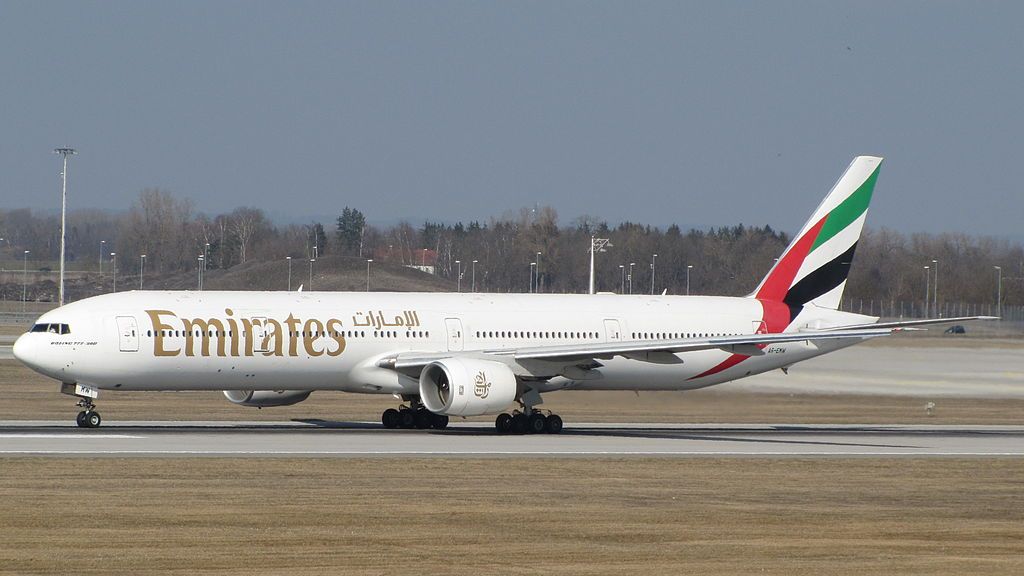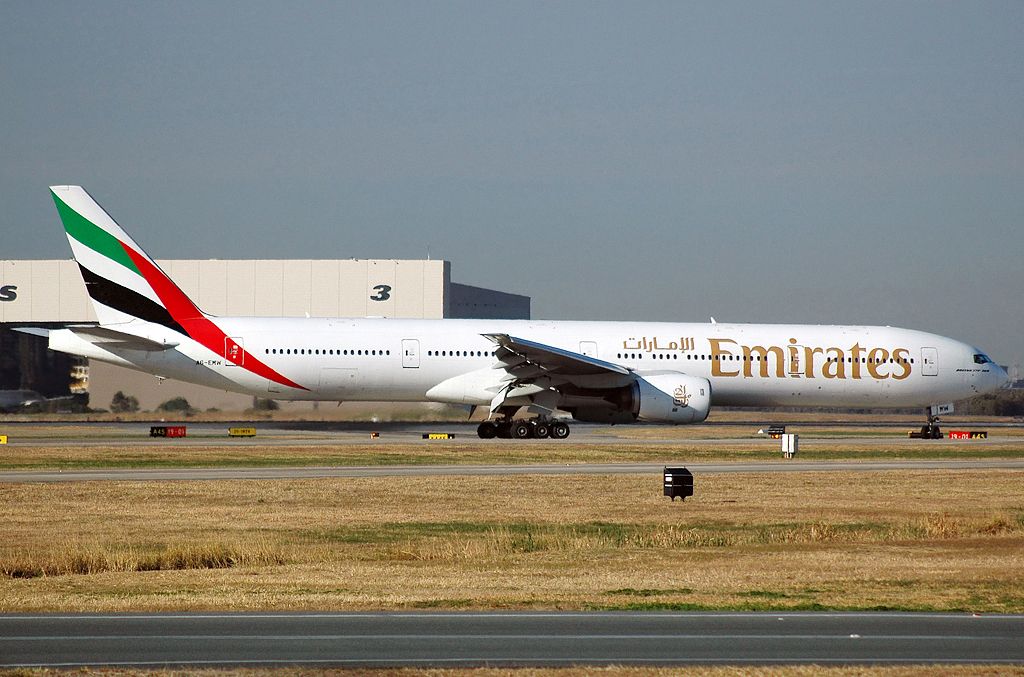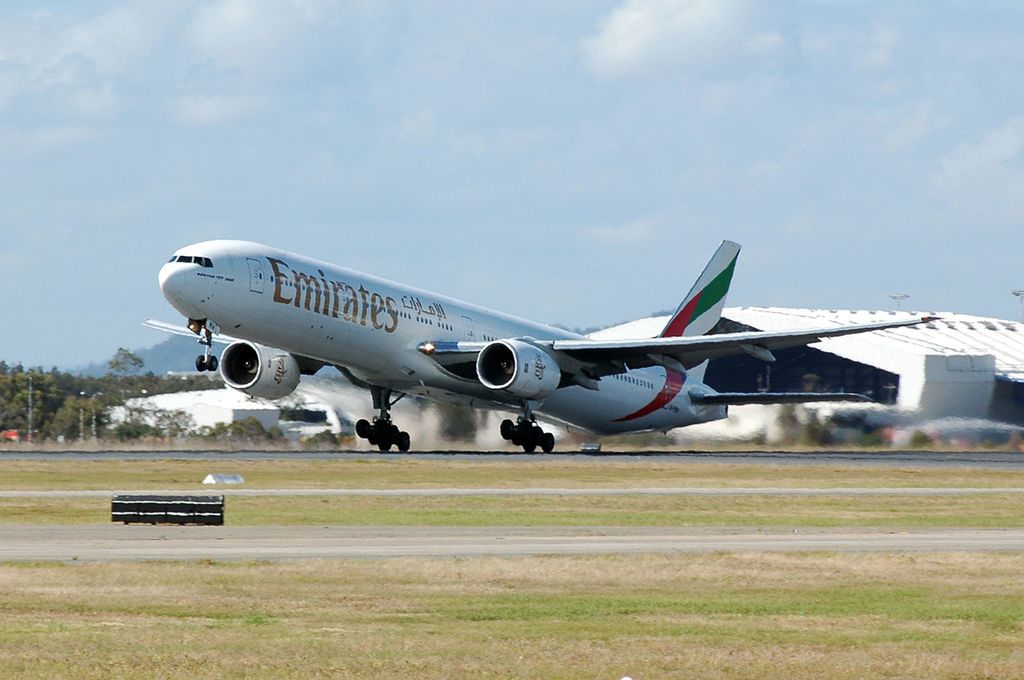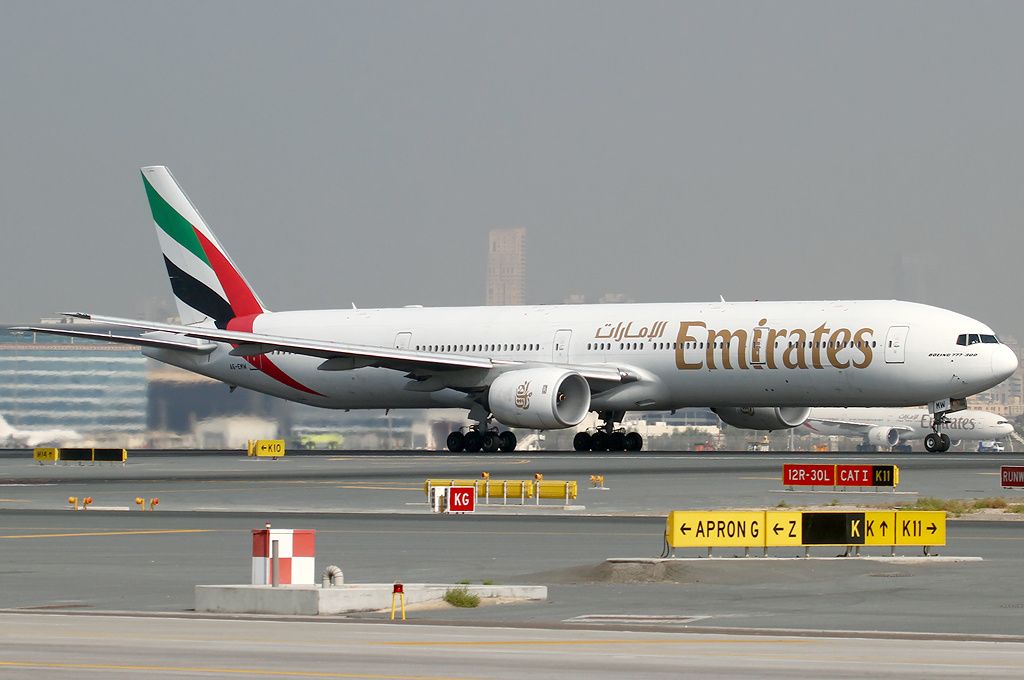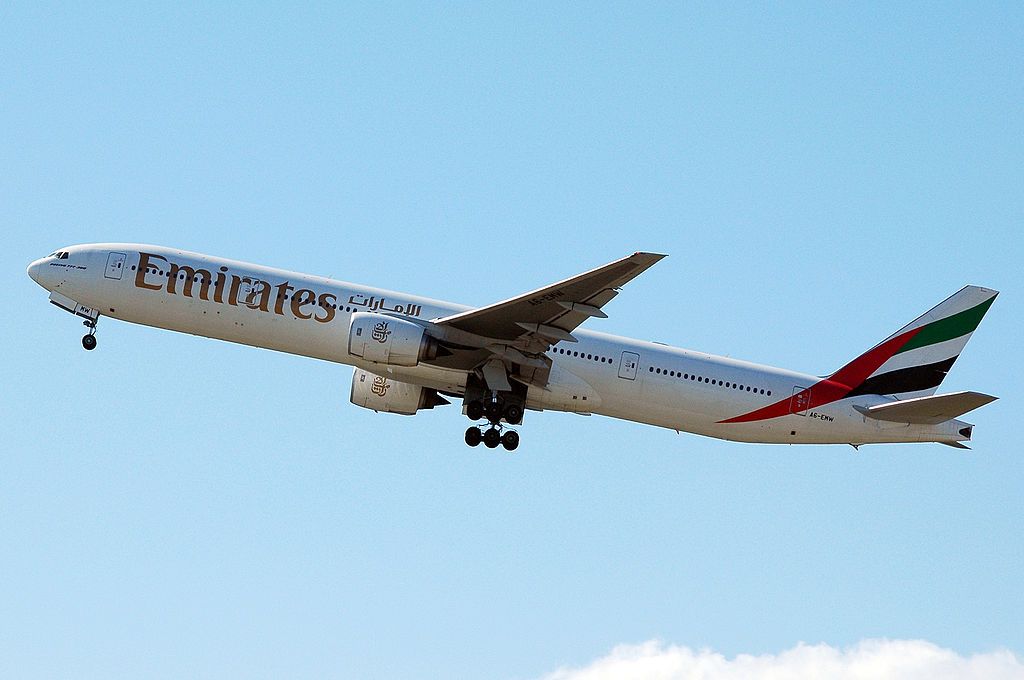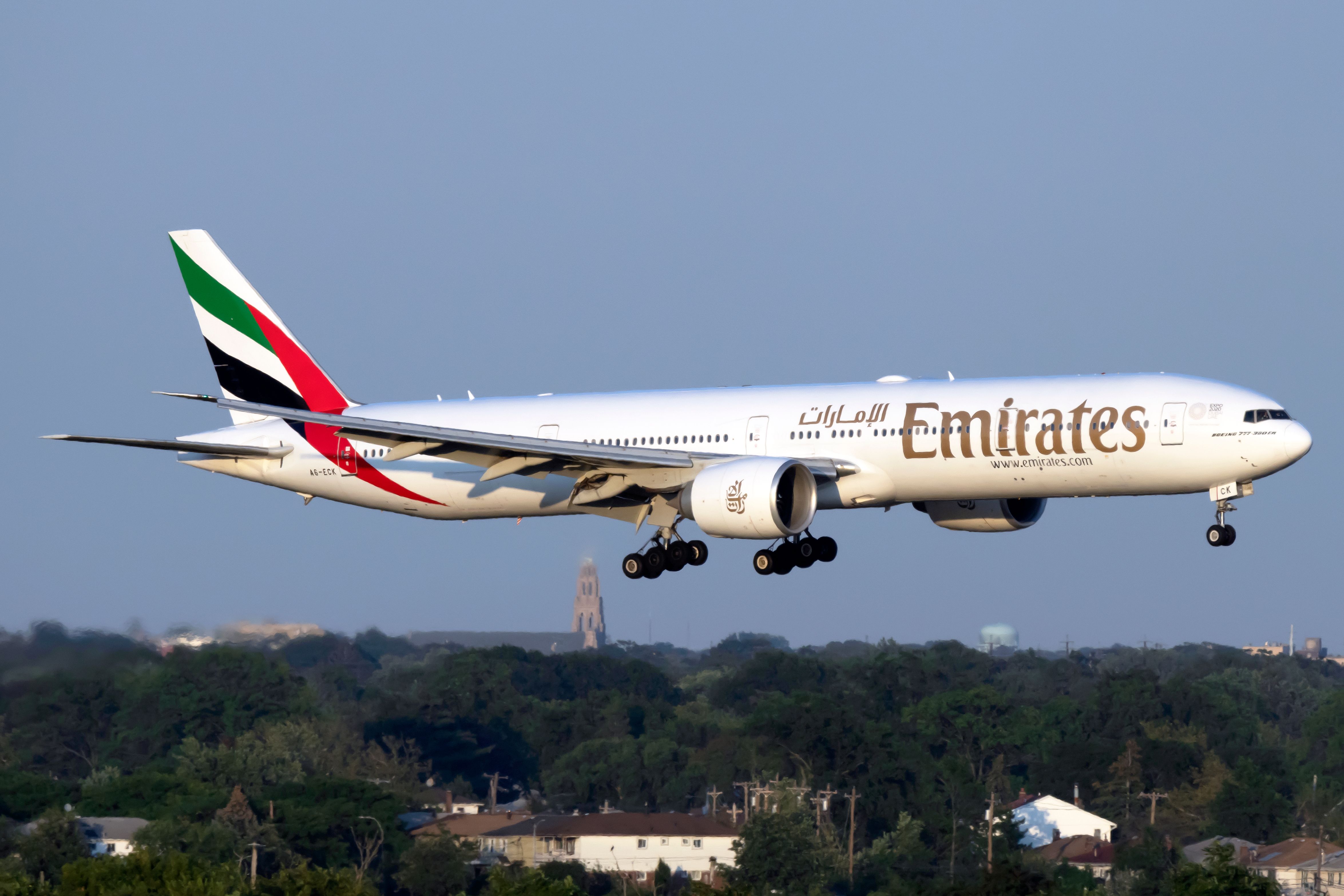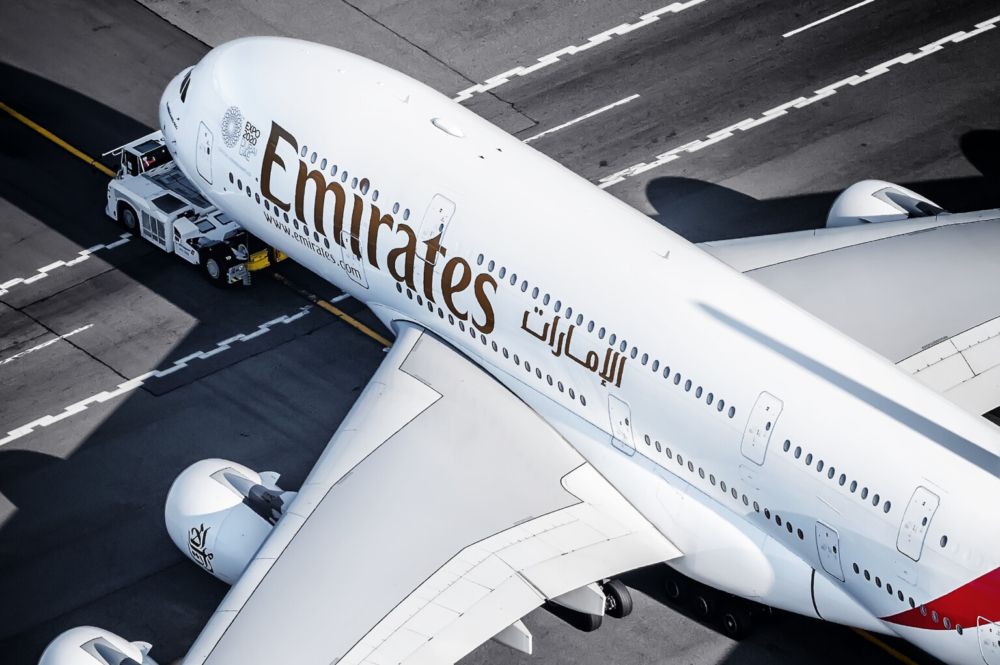On August 3rd, 2016, Emirates flight number EK521 crashed upon landing at Dubai International Airport. Out of 300 passengers and crew onboard the aircraft, all survived the impact and subsequent post-crash fire, although the aircraft involved was damaged beyond repair. The total loss of the aircraft was the first for the airline and the sixth for the type.
Background to Flight EK521
On August 3rd, 2016, an Emirates Boeing 777-300ER registered A6-EMW was operating flight EK521 from Thiruvananthapuram, India, to Dubai International Airport, the airline's main base. The flight had 300 people onboard - 18 crew members and 282 passengers.
The aircraft involved first flew in March 2003 and, at the time of the accident, had accumulated 58,169 flying hours and had completed 13,160 cycles in total. The plane was powered by a pair of Rolls-Royce Trent 892 powerplants.
The aircraft departed Thiruvananthapuram (TRV) at 05:06 hours UTC. For the flight to Dubai (DXB), the captain was designated as the pilot flying (PF), while the copilot was the pilot monitoring (PM). The flight across the Indian Ocean was routine, with no abnormalities reported by the flight's crew to air traffic controllers.
The approach to Dubai
As flight EK521 approached Dubai, the flight crew received the automatic terminal information service (ATIS) information over the radio. This gave the latest meteorological report for Dubai and, crucially, included a wind shear warning for all runways at the airport.
Having received the wind shear warning, the flight crew prepared for the approach into Dubail and subsequently configured the aircraft for landing. The pilots set the flaps to 30 degrees in accordance with the airline's standard operating procedures (SOPs). The crew also set the final approach speed to 152 knots indicated airspeed (IAS).
Flight EK521 was given radar vectors by Dubai air traffic controllers, and the aircraft was vectored for an area navigation (RNAV/GNSS) approach to runway 12L. Once established and stabilized onto its final approach, air traffic control cleared the crew of flight EK521 to land and then vacate the runway via taxiway Mike 9.
The crew was informed that the wind was blowing from 340 degrees at 11 knots.
Windshear on final approach
During the approach, at 08:36:00 UTC (12:36 local time), with the autothrottle system set up in 'SPEED' mode, the Boeing 777-300ER descended through 1,100 feet at 152 knots IAS. The wind direction started to change from a headwind component of eight knots to a tailwind component at this point.
At approximately 920 feet above the airfield, the crew disengaged the autopilot and continued the approach with the autothrottle still connected. At 08:36:22, as the aircraft descended through 700 feet, it was subjected to a tailwind component which gradually increased to a maximum of 16 knots.
At 08:37:07, with the aircraft at 159 knots and 35 feet above runway 12L, the captain started to flare the aircraft. The autothrottle mode transitioned to 'IDLE,' and both thrust levers were retarded to the idle position.
At 08:37:12, with the aircraft at 160 knots IAS and just five feet above the runway, the wind direction again started to change to a headwind. This was just five seconds before the touchdown. Shortly afterward, the plane's right main landing gear touched down approximately 3,600 feet (1,100 meters) from the runway 12L threshold, followed three seconds later by the left main landing gear. The nose landing gear remained in the air.
Forced to perform a go-around
Given the aircraft's distance down the runway on its initial touchdown, the runway awareness advisory system (RAAS) aural message "LONG LANDING, LONG LANDING" was annunciated to the pilots in the cockpit. The crew elected to perform a go-around at this point in accordance with the Emirates SOPs.
At 08:37:23, the aircraft became airborne while performing its go-around. As the aircraft's nose was raised, the crew moved the flap lever to the 20 degrees position. Two seconds later, the landing gear was retracted. Dubai air traffic control issued a clearance to flight EK521 to continue straight ahead and climb to 4,000 feet - an instruction that was acknowledged by the crew.
Both thrust levers were moved from the idle position to full forward. The autothrottle transitioned from 'IDLE' to 'THRUST' mode in response. Approximately one second later, a ground proximity warning system (GPWS) aural warning of "DON'T SINK, DON'T SINK" was annunciated. One second before impact, both engines started to respond to the thrust lever movement, showing an increase in power.
The aircraft reached a maximum height of approximately 85 feet, travelling at 134 knots with the landing gear in transit to the retracted position before it began to sink back down, subsequently impacting the runway surface.
The impact and subsequent fire
At 08:37:38, the rear of the aircraft's fuselage impacted the runway at 125 knots, with a nose-up pitch angle and a rate of descent of 900 feet per minute. This was followed by the impact of the engines on the runway.
The three landing gear sets remained in transit to their retracted position at this point. As the aircraft slid along the runway, the right-side engine separated from the wing, and an intense fuel-fed fire was observed to start in the area of the damaged engine-pylon wing attachment.
The aircraft continued to slide along the runway on the lower fuselage, the outboard right wing, and the left engine. A second fire then started on the underside of the left engine. With the aircraft eventually coming to rest, the captain transmitted a "MAYDAY" call and informed air traffic control that the aircraft was being evacuated.
The airport's firefighting service (ARFFS) arrived at the accident site within one minute of the aircraft coming to rest and immediately started to apply foam to the fires. Meanwhile, crewmembers and passengers evacuated the aircraft using the escape slides, though not all exits were usable as some slides were blown up against the aircraft due to the wind.
As a result of the emergency evacuation, 21 passengers, the co-pilot, and one cabin crewmember sustained minor injuries, and a second cabin crewmember sustained a serious injury. Approximately nine minutes after the aircraft came to rest, a firefighter was also fatally injured due to an explosion in the center fuel tank.
Investigation and cause
A full accident investigation was carried out by the General Civil Aviation Authority of UAE (GCAA), with its final report on the crash being issued in January 2020. Following its detailed investigation involving several parties, which included the aircraft and engine manufacturers, the findings of the report were made public.
The main causes of the accident suffered by flight EK521 were listed as follows -
- During the attempted go-around, except for the last three seconds prior to impact, both engine thrust levers, and therefore engine thrust, remained at idle. Consequently, the aircraft's energy state was insufficient to sustain flight.
- The flight crew did not effectively scan and monitor the primary flight instrumentation parameters during the landing and the attempted go-around.
- The flight crew was unaware that the autothrottle had not responded to move the engine thrust levers to the TO/GA (take-off/go-around) position after the captain pushed the TO/GA switch at the initiation of the Flight Crew Operating Manual (FCOM) go-around and missed approach procedure.
- The flight crew did not take corrective action to increase engine thrust because they omitted the engine thrust verification steps of the FCOM go-around and missed approach procedure.
Contributing factors
Along with the primary causes listed above, according to the investigation team from GCAA there were also a number of crucial contributory factors that led to the accident -
- The flight crew was unable to land the aircraft within the touchdown zone during the attempted tailwind landing because of an early flare initiation and increased airspeed due to a shift in wind direction, which took place approximately 650 m beyond the runway threshold.
- When the captain decided to perform a go-around, his perception was that the aircraft was still airborne. In pushing the TO/GA switch, he expected that the autothrottle would respond and automatically manage the engine thrust during the go-around.
- Based on the flight crew's inaccurate situation awareness of the aircraft state and situational stress related to the increased workload involved in flying the go-around maneuver, they were unaware that the aircraft's main gear had touched down, which subsequently caused the TO/GA switches to become inhibited.
- Additionally, the flight crew was unaware that the autothrottle mode had remained at 'IDLE' after the TO/GA switch was pushed.
- The flight crew's reliance on automation and lack of training in flying go-arounds from close to the runway surface and with the TO/GA switches inhibited significantly affected the flight crew's performance in a critical flight situation.
- The FCOM go-around and missed approach procedure did not contain steps for verbal verification callouts of engine thrust state.
- The aircraft's systems, as designed, did not alert the flight crew that the TO/GA switches were inhibited at the time when the captain pushed the TO/GA switch with the autothrottle armed.
- The aircraft systems, as designed, did not alert the flight crew to the inconsistency between the Aircraft configuration and the thrust setting necessary to perform a successful go-around.
- Air traffic control did not pass essential information about wind shear reported by a preceding landing flight crew, nor that the two preceding flights performed go-arounds after passing over the runway threshold. The flight crew's decision-making process during the approach and landing was deprived of this critical information.
- The modification of the go-around procedure by air traffic control (4,000ft rather than the published 3,000ft) may have confused the pilots at a point where their workload was already in excess of manageable limits.
No one single cause of the accident
As with most aviation incidents and accidents, there was not one single point of failure or error that led to the crash of flight EK521. The wind shear on the final approach may have been the starting point, yet the final outcome was the result of poor cockpit management and execution of the go-around procedure by the flight crew.
This was combined with the failure of air traffic controllers to provide vital information regarding the previous go-arounds to the crew of EK521, who might have been better mentally prepared for a go-around had they been provided with this information.
Although the aircraft was destroyed in the post-impact fire, the outcome was miraculous for the passengers and crew onboard EK521. Although injuries were sustained during the evacuation process, it is remarkable that there was no major loss of life following the accident and subsequent fire.
The regrettable loss of an airport firefighter during this incident led to standard procedures and training for such airport workers being amended by airport fire services worldwide to prevent future loss of life.
Sources: Aviation Safety Network, GCAA

